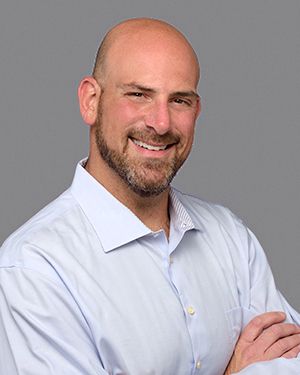May 10, 2022
OVBC 2022: Somebody Was Missing from The Party

You got the sense that everyone in the conference had locked arms – industry, surgeons, and administrators – in the name of improving value. But there was a certain someone missing from that daisy-chain: Payors.
Recently, OIC was a proud supporter of the Sixth Annual Orthopaedic Value-Based Care Conference. “[Its] mission is to break the silos by bringing together physicians, executives, nurses, and pharma leaders to solve the most pressing problems and to actualize the most promising value-based care opportunities in the musculoskeletal settings. This conference focuses on the operational, clinical, and financial aspects of the orthopedic practice.”
The conference itself had a great vibe and balanced a relaxed feel with excitement about the future and value-based care. Academic and independent surgeons candidly shared thoughts on what is working to improve value, the role of innovation, and exactly what the definition of innovation should mean for this facet of healthcare. You could sense the sincerity of these leaders’ comradery from their banter and smiles as they enjoyed jokes at each other’s expense while all passionately speaking to how we can do better. Leaders from Duke, Rothman, Dell Medical, OrthoCarolina and many others gave great insight into the conversations they have with administration around risk sharing, savings, outcomes and surgeon burn-out, just to name a few topics.
Without a doubt, the biggest takeaway is that bundled payments are anything but going away. The conditional bundle, a paradigm in which payors provide a single payment for an indication rather than services provided to treat that indication, got a lot of airtime. It is incredibly novel in the sense that it incentivizes non-operative treatment. Perhaps this is why half of the publicly traded Big Ortho vendors were not there – who knows. You got the sense that everyone in the conference had locked arms – industry, surgeons, and administrators – in the name of improving value. But there was a certain someone missing from that daisy-chain: Payors.
There is a certain wisdom one gleans from a career spent as an independent surgeon. One such surgeon we have worked with for a long time sums up the whole thing rather poignantly: “Money is the answer. What’s the question?”
Just like those absentee big box implant vendors, not a single person was there to speak on behalf of an insurance company. After all, who better to have in the ring than the person cutting checks to everyone in that conference hall? The question was posed in the conference during a Q&A, post-panel discussion. You could hear the murmurs, “They were here for the first conference…”
Why weren’t they there now? This is about saving money that comes from their pockets.
If you lower spend, you must lower premiums…right?A win for Jane and Joe America, no??
However, the cap on insurance company performance is about as counter-intuitive as fee-for-service medicine itself. It’s the nightmare within the nightmare. Insurance companies must spend 80% of the premiums they receive from their beneficiaries. So, would you rather spend eighty dollars after receiving one hundred dollars, or 160 dollars after receiving 200? With simple math, the answer is that if you are not in insurance, you are in the wrong business. It makes you wonder just how many insurance companies would have reached platinum sponsorship at OVBC this year, let alone guess at how many of them would show up if they were incentivized to do so.
It is amazing what you can learn from an industry when they don’t show up. Actions certainly speak louder than words. With that said, leaders at the OVBC conference have a little policy of their own that came through in sharing their accomplishments: Wag the Dog. Hope the insurance industry has a strong tail. Perhaps one or two just might be incentivized to hang on.
